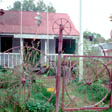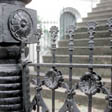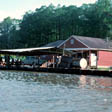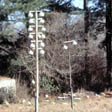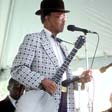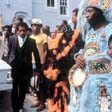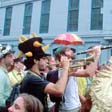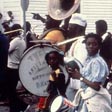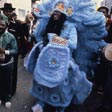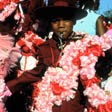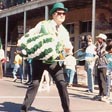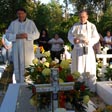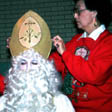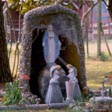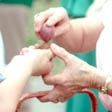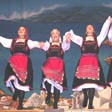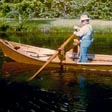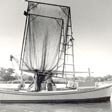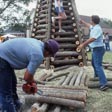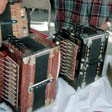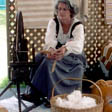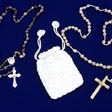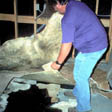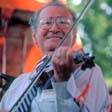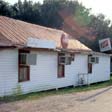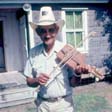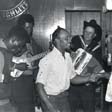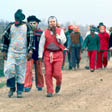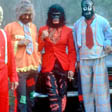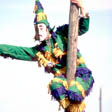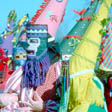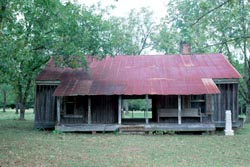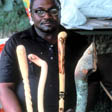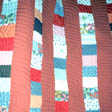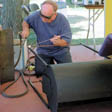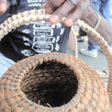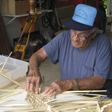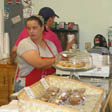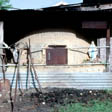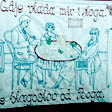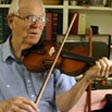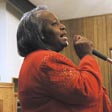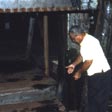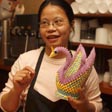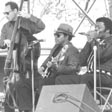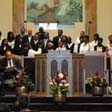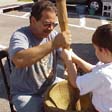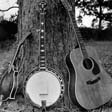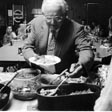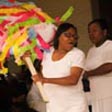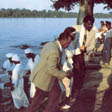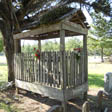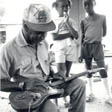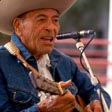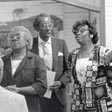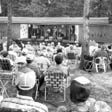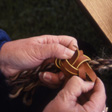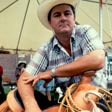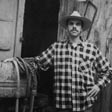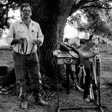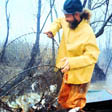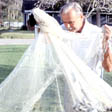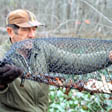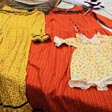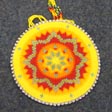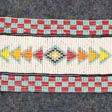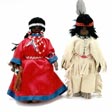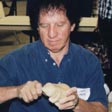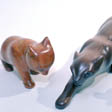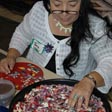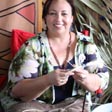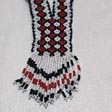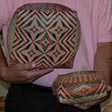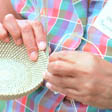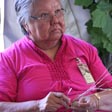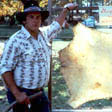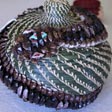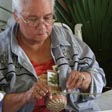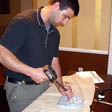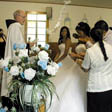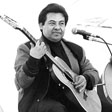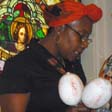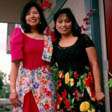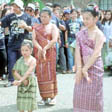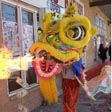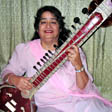Louisiana's Traditional Cultures: An Overview
By Maida Owens
An essay adapted from one originally published in the book Swapping Stories: Folktales from Louisiana
Introduction
A basic principle in the study of folklore and anthropology is that in order to understand a cultural feature, one must understand the context in which it exists. Therefore, to understand a basket, dance, song, ritual, or story, one must know about the maker, dancer, singer, practitioner, or teller. One must understand the culture or setting in which it is made or performed. Only then can one know its significance and function within the cultural region for the people. One must take a holistic look at the integrated system to understand each part.
small towns, urban areas, bayou communities, and rural areas.
Therefore, when one examines the traditions of an entire state, it is important to understand the cultures within the state and how they relate to each other. This is particularly true of Louisiana, because of the state's complex cultural milieu. Hence, here follows a brief overview of Louisiana's traditional cultures. Although no article can do justice to the folk cultures of the state, it is important to provide a sketch of the peoples and their regions as a background for the stories that follow.
It is trite to say that Louisiana is culturally diverse. The truth is that few people realize the degree of complexity and variation in the cultures of the state. Many are aware that New Orleans and French-speaking South Louisiana are juxtaposed against the African-American/British-American culture of North Louisiana, but few are familiar with subtle differences within these regional groups and the cultural complexities resulting from the presence of Native Americans and the waves of immigrations by Irish, Germans, Italians, Czechs, Hungarians, Croatians, Filipinos, Latins (Isleño, Mexican, Cuban, Guatemalan), and East Asians (Chinese, Vietnamese, Laotian, Thai). Each group has added to the cultural environment of Louisiana and in varying ways influenced the traditions found here.
Geographers and historians have documented many of the settlement patterns and the waves of immigration into most parts of Louisiana. Louisiana State University geographer Fred Kniffen laid the foundation for understanding Louisiana's settlement patterns during the 1930s (Kniffen 1936). More recently, Malcolm Comeaux (1972) investigated the Atchafalaya Basin settlement patterns and folk occupations, University of Southwestern Louisiana historian Carl Brasseaux focused on French Louisiana settlement patterns (Brasseaux 1987 and 1992), and historian Gwendolyn Midlo Hall documented the earliest influx of Africans into Louisiana via slavery from the Senegambian region of West Africa (Hall 1992).
Building on this base of cultural geography and history, Louisiana folklore research has led to several publications that provide a foundation, stimulating further study. The Louisiana Folklife Program's Louisiana Folklife: A Guide to the State (1985), edited by the program's first director, Nicholas R. Spitzer, is the most comprehensive state publication of its type. Frank de Caro's Folklife in Louisiana Photography (1990) provides a comprehensive overview of the photographic record. Other publications have focused tightly on a specific group, region, or genre: for example, Gifts from the Hills: The Folk Traditions of North Central Louisiana (Roach-Lankford 1984), Folklife in the Florida Parishes ([Gardner et al.] 1989), Doing It Right and Passing it On: North Louisiana Crafts (Gregory 1981), Cajun and Creole Folktales (Ancelet 1994), and The Spanish Tradition in Louisiana (Armistead 1992).
Since the advent of the Louisiana Folklife Program in 1978, many researchers have worked with the program to present their research in various formats to the general public. These researchers have explored numerous topics, but most generally focus on certain aspects of particular ethnic communities or folklore genres, including North Louisiana quilters (Roach 1986), north-central Louisiana British- and African-American folk cultures (Roach-Lankford 1984), Cajun musicians and culture (Ancelet 1984 and 1989a; Ancelet et al. 1991; Savoy 1984), Creole language (Ricard 1977, Snyder 1990), South Louisiana wooden boatbuilding (Knipmeyer 1976, Comeaux 1985, Brassieur 1989), Mardi Gras Indians (Smith 1984 and 1994), Hungarian dance and costume (Romero 1989), African-American gospel (Jackson 1989), Cajun Mardi Gras (Ancelet 1989b, Lindahl 1996a, Lindahl 1996b, Mire 1993, Ware 1994), Czechs (Walker 1989), Louisiana crafts (Bergeron 1988, de Caro and Jordan 1980, Roach-Lankford 1984), commercial fisherfolk (Knipmeyer 1956, Comeaux 1985, Gregory 1966), and Native American cultures (Gregory 1992, Kniffen, Gregory, and Stokes 1987), languages (Kimball 1989, Dreschel 1979), and crafts (Medford, Gregory, and Sepulvado 1990).
The Louisiana Crafts Program and Folklife Program also produced publications featuring individuals involved with specific programs: Fait à la Main: A Sourcebook of Louisiana Crafts (Bergeron 1988) and Keeping It Alive: Cultural Conservation Through Apprenticeship (Dunbar and Owens 1993). This essay draws on these publications and the research conducted by cultural specialists (folklorists, cultural anthropologists, cultural geographers, ethnomusicologists) and the non-academically-trained community scholars. Readers seeking more detailed information should refer to these publications and for a historical overview of folklife research to de Caro's article in Louisiana Folklife: A Guide to the State (1985, 12-34).
Many of the folk crafts mentioned in this article are displayed in The Creole State: An Exhibition of Louisiana Folklife that was located in the Louisiana State Capitol until 2002 and is now a virtual exhibit. First curated by Nicholas R. Spitzer in 1985 and renovated by myself in 1994, this exhibit by the Louisiana Folklife Program presents folk crafts from Louisiana's traditional cultures in seven sections: folk toys; folk instruments; occupational crafts; domestic crafts; decorative folk arts; ritual, festival, and religion; and cultural conservation.
Scholars divide the state into three major cultural regions, New Orleans, South Louisiana, and North Louisiana, each of which contains pockets of cultural groups.
New Orleans
When Louisiana is mentioned, many people think only of New Orleans and neglect other regions of the state. Many misunderstandings exist about the distinct and complex culture that evolved in this metropolitan center. New Orleans, like Louisiana as a whole, has been governed by the French, Spanish, and Americans, with each making distinctive contributions. In addition, other ethnic groups, in particular Native Americans (especially Choctaw), Africans (both French-speaking African Creoles and English-speaking African Americans), Italians (primarily Sicilian), Germans, and Irish, have also made significant contributions to the cultural landscape of the city. Today, New Orleans is a multicultural metropolis with significant communities of Jews, Latins (from throughout the Caribbean and Central and South America), Greeks, Haitians, Filipinos, and Asians, including a large concentration of Vietnamese (Cooke and Blanton 1981).
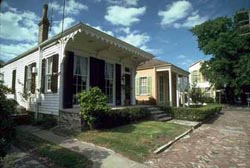
Contrary to some tourism promotions, New Orleans is not a Cajun town, even though many Cajuns moved to New Orleans after World War II and grew to dominate certain parts of the city, such as Westwego and Marrero on the West Bank. The first and largest migrations of the French to New Orleans were not Acadian. French nobles and army officers blended with the Spanish to create a Creole community. "Creole," as used in New Orleans, refers either to the descendants of the French and Spanish settlers or to people of French, Spanish, and African descent who were known as gens de couleur libres or free-people-of-color (Snyder 1990, Tregle 1992). These two groups were culturally intertwined, yet maintained separate identities.
Most Africans in Louisiana arrived as slaves from Francophone West Africa, but later some arrived as free-people-of-color from the Caribbean. Two-thirds of the Africans arriving before 1730 were from the Senegambia region of West Africa. Senegambia was home to many culturally related groups with similar languages, but most Africans brought to Louisiana during this time were either Wolof or Bambara (Hall 1992). After the Haitian Revolution of 1791-1804, another influx of Africans, including many free-people-of-color, arrived by way of the Caribbean. Most of these Africans from the Caribbean were originally from Dahomey (now the Republic of Benin) and Nigeria (Hunt 1988).
The fact that a significant number of Africans from closely related cultures came to Louisiana was a factor in their ability to retain many cultural traits and contribute to the Creole culture that was developing in New Orleans and South Louisiana. For example, the Haitians brought the shotgun house and the voodoo religion to Louisiana. The word "voodoo" is derived from the African word voudun, which means "deity" in Yoruba or "insight" in Fon (Bodin 1990). Free-people-of-color dominated many building trades in New Orleans, were often highly educated, and as chefs played an important role in the development of Creole cuisine for which the city is known (Reinecke 1985). Okra, an important ingredient of gumbo, and the word "gumbo" itself (derived from Bantu nkombo) are African.
After the Louisiana Purchase in 1803, Americans, referred to as Les Américains, arrived and settled upriver or uptown from the central Creole district, with Canal Street being the dividing line. Irish fleeing the potato famine of the 1840s settled in the area that became known as the Irish Channel between the Mississippi River and the Uptown Garden District. The 1850s saw an influx of Germans. After the Civil War, even more English-speaking African Americans arrived to join the population of freed slaves. The distinction between African Creoles and African Americans began to blur after 1918 (Reinecke 1985, 58-59), but still today Louisianans at times refer to people not descended from the French or Creole culture as Americans. Jazz played a role in this cultural fusion because ethnic groups that did not otherwise mingle were drawn together through jazz. African Americans, African Creoles, Italians, Germans, and Irish were all instrumental in the development of this new art form. In New Orleans, musical traditions range from brass jazz bands to African Creole and African-American Mardi Gras Indians chanting call-responses that have been called the most African of all musics found in North America. African-American Delta blues and Latin salsa are some of the most frequently heard musics today in local clubs, along with the distinctive New Orleans rhythm & blues made famous by the likes of Fats Domino, Professor Longhair, and the Neville Brothers (Smith 1990).
Parading is another cultural expression cherished by New Orleanians. Mardi Gras, or Shrove Tuesday, celebrated the day before Lent begins, is a community-wide celebration that embraces all segments of society. The elite krewes (festive societies) sponsor elaborate parades and balls, neighborhood groups celebrate with organized walking clubs or less elaborate truck parades, and working-class blacks celebrate dressed as Mardi Gras "Indians." Garbed in elaborate feather and bead costumes and identifying themselves as tribes to emulate and honor Native Americans, Mardi Gras Indian tribes such as the Wild Magnolias, the Golden Star Hunters, and the Yellow Pocahontas, compete for recognition of their costume, song, and dance while parading on Mardi Gras day.
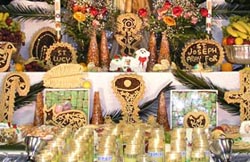
Parades also occur at other times of the year. The Irish, who also contributed to the distinctive "Yat" dialect (the name of which is derived from the contraction of `Where you at?') that resembles the Brooklynese characteristic of many New Orleanians, celebrate St. Patrick's Day (March 17) with what is essentially a Mardi Gras parade with green floats filled with revelers who throw to the crowd the ingredients for potato stew. Jazz parades still accompany some funerals, and the Mardi Gras Indians return to the streets for Super Sunday (the Sunday closest to St. Joseph's Day, March 19). Some jazz parades only consist os the band and those secondlining. It is still common among African Americans for the male-oriented, secular Social Aid and Pleasure Clubs to enter the streets throughout the fall, and the female-dominated organizational counterparts to have second-line parades as part of their spring celebrations. The marching and parading traditions inspire and incorporate specific craft traditions, such as ribbon baskets and sashes for the Benevolent Societies' marching clubs, and costume- and maskmaking for Mardi Gras.
South Louisiana
Nicholas R. Spitzer has described rural South Louisiana as a cultural gumbo in which each of the different ingredients is identifiable, yet all have blended, affecting each other (Spitzer 1977). A complex blend of French, Spanish, German, African, Irish, and Native American influences created a unique regional culture. Yet, when one looks closer, one becomes aware of local variations: in spite of its deep French roots, South Louisiana is not a monolithic, homogeneous Francophonic culture. French traditional culture in Louisiana is largely contained in a great triangular area with its apex below Alexandria and its base stretching from New Orleans to Lake Charles. Small enclaves dominated by one or more of Louisiana's French-influenced traditions exist, however, even in North Louisiana, near Natchitoches and Hebert in Caldwell Parish, and along Bayou Pierre (the Rambin community) and in Big Island in Rapides Parish.
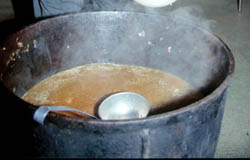
The dominant regional culture of South Louisiana results from successive waves of French (Canadian traders, Acadians from Nova Scotia and New Brunswick, French royalists, Bonapartists, apolitical French civilians, French soldiers, French from the West Indies), Spaniards (from Spain, the Adaeseños from Texas-Mexico, and the Isleños from the Canary Islands), Germans (arriving as early as the Spanish period and continuing into the nineteenth century), Irish, Africans, and a variety of Caribbean transplants. Many of these groups blended with the Louisiana Native American groups (some aboriginal tribes and others who resettled in the area during the eighteenth and nineteenth centuries). Some Native Americans retain their own unique cultures, virtually unmodified by European contact in a number of ways.
Many people think of South Louisiana as "Cajun," the term being a local version of "Acadian." Today's Cajun culture resulted from the blending of several groups, primarily the Acadians, the descendants of French Acadians who were expelled from Nova Scotia by the British in 1755 and who began arriving in Louisiana in 1765. Two primary cultural regions exist within South Louisiana. While still basically French, the area east of the Atchafalaya Swamp and along the Mississippi River and Bayou Lafourche between Baton Rouge and New Orleans received a significant influx of wealthy Lowland South planters of English descent. Those plantation owners influenced the area in many ways, particularly by teaching their slaves English rather than French. Also, being closer to New Orleans and on major transportation routes, the Germans, Spanish, French, English, and later the "Kaintucks" (Americans from up the Mississippi River) were more cosmopolitan than people in the swamps and on the prairies to the west. A large number of Germans arrived during the Spanish period, settled upriver from New Orleans along the German Coast, and provided most of the vegetable crops needed by New Orleans. These Germans are not as easily identified today, because they gradually assimilated into the dominant French culture, and many of their names were translated into French or English (Reinecke 1985).
Living in relative isolation on the Louisiana bayous and the southwest Louisiana prairie and being the dominant cultural group, the French-speaking Acadians, French nationals, French royalists, and French army officers absorbed Germans, Spanish, British Americans, and Native Americans who settled among them or married into their families. During the late 19th century, large numbers of Midwesterners settled the Cajun prairie to take part in the newly developing rice industry and the railroad. Within a relatively short time period, many were absorbed into Cajun culture. Today, many French-speaking people who identify themselves as Cajuns may have surnames such as Frey (German), Smith (English), McGee (Irish), and Manuel or Rodrigue (Spanish) in addition to Acadian surnames like Bergeron, Broussard, LeBlanc, or Mire, and the French colonial army surnames of Fontenot or Fusilier (Brasseaux 1992).
The French-speaking black Creoles of the Southwest Louisiana prairie lived alongside the Cajuns and were often free-men-of-color and landowners. While remaining racially distinct from their Cajun neighbors, they share many cultural traits, including the food, Mardi Gras, Catholicism, musical repertoire, and often the French or Creole language. But one of their most significant contributions is zydeco, a distinctly black Creole music known for its blending of French songs and African/Caribbean rhythms. To be of African descent in South Louisiana certainly does not presume a French-speaking heritage. English-speaking blacks, many of whom descended from freed slaves, also made cultural contributions (Fontenot 1994a and 1994b). For example, the zydeco repertoire shows heavy influence from Deep South rhythm & blues.
Many people are aware that the Cajun and Creole cultures have contributed Cajun dance music, with two-steps, waltzes, and haunting ballads; and Creole zydeco music, with its African influence. But more recently—in the early 1950s—this unique cultural mix also created "swamp pop", a regional variation of rhythm & blues music common throughout South Louisiana and into east Texas. Swamp pop combines rhythm & blues with Cajun and black Creole music and country and western. A strong horn section and honky-tonk piano characterizes this blend (Bernard 1995). The region also has a vital jazz community (Sonnier 1990). Cajuns and Creoles are as well known to outsiders for their special foods as for the distinctive music, and a delectable array of food dishes (crawfish étouffée, gumbo, bisque, sauce piquante, jambalaya) can be found in the region (Gutierrez 1992). Many restaurants and dance halls provide Cajun and Creole music for both tourists and locals. Saturdays often mean jam sessions, radio shows, or dances for Cajun music lovers. Outsiders seldom know about Cajun and Creole crafts, such as cowhide chair bottoms, wooden boats (skiffs, luggers, pirogues), Acadian brown cotton weaving, accordion building, fiddlemaking, and Job's Tears rosaries (Latimer and Vermillion 1988) or lesser known food delicacies such as langue boureé (stuffed beef tongue) or chaudin (sausage-stuffed pork stomach).
Some communities in South Louisiana have always been predominantly English-speaking. Fishing and gathering settlements in the Atchafalaya Basin were different from those on the bayous and prairies to the east and west. Many of these English-speaking, predominately white communities relocated to the levees surrounding the basin when the U.S. Corps of Engineers transformed the basin for flood control. Many individuals also moved to the Morgan City area, which was primarily English-speaking. Other English-speaking people in Morgan City came from the Carolinas' coastal fishing communities and became shrimpers or menhaden ("poggie") fishermen.
South Louisiana also has pockets of ethnic groups that have resisted total absorption by French/Cajun culture. In St. Bernard Parish, the Isleños are descended from Canary Islanders who settled the area in the 1760s, continue to retain their archaic Spanish dialect and perpetuate the singing of décimas (narrative songs). In Acadia Parish, Germans of Robert's Cove, who settled the area during the 19th century, begin the Christmas season with a procession on December 5, the eve of the religious feast of St. Nicholas. St. Nick, Lil' Black Peter, Santa Claus, and the church choir visit German homes in the community. Croatians from the Dalmatian Coast settled in Plaquemines Parish, introduced the oystering industry, and continue to control it. These groups remain culturally distinct after more than one hundred years of Louisiana residency.
Throughout South Louisiana and New Orleans, Catholicism, the dominant religion since colonial times, is shared by many cultural groups. As a result, cultural or folk Catholicism, incorporating the culturally specific religious traditions of each group, has contributed practices that persist today. For example, on November 7, New Orleanian Nicaraguans build home altars for La Purissima, the Feast of the Blessed Mother; and in Cajun and Creole prairie communities Mardi Gras, Fat Tuesday, is observed with le courrir de Mardi Gras (Mardi Gras run) by community members proceeding from house to house on horseback or by truck to gather ingredients for a communal gumbo, one last good meal and lively party before the solemn observance of Lent begins on Ash Wednesday.
North Louisiana
The rest of Louisiana is populated primarily by English-speaking British Americans and African Americans. This includes the Florida Parishes north of Lake Pontchartrain (in the "toe of the boot" as locals say) and parishes north of the French triangle (see maps). The term "British American" as used in this volume refers to various English-speaking peoples from the British Isles who arrived at various times in Louisiana history. The term is intended to replace Anglo-Scotch-Irish and Anglo-Celtic. Within what is commonly called "North Louisiana" there are two primary subcultures: the Upland South hill culture and the Lowland South plantation culture along the river bottoms. Both are primarily Protestant, but there are significant differences. The Upland South region was primarily populated by Scotch-Irish who migrated from Georgia, Alabama, South Carolina, Mississippi, and Tennessee (Roach-Lankford 1985). The majority of these immigrants were Baptist or Methodist small farmers with a strong Protestant work ethic. Few had slaves in large numbers. The Lowland South region in Louisiana was populated by the descendants of Englishmen and Scots from other Southern states and New England. This group established plantations, especially cotton, along the bottoms of the Mississippi, Red, and Ouachita Rivers. More often, these settlers were Methodists, Presbyterians, or Episcopalians. Their plantations depended on a large slave population, a fact reflected in the high concentration of rural blacks who inhabit the region today (Cash 1941, Frantom 1993, Roach-Lankford 1985).
Culturally, North Louisiana is akin to a patchwork quilt, as described by H. F. Gregory (1981). Each piece has remained intact, coexisting with the others. But just as South Louisiana is not a uniform French/African culture, North Louisiana is not a uniform British/African culture. Variations and subtleties exist through the region. Distinctive traits differentiate the communities of the northeast, northwest, and central regions.
In the Mississippi River delta in northeast Louisiana, the land is low and has few large towns. On the high bluffs of the Mississippi side of the river, larger towns, including Vicksburg and Natchez, were founded. They also served the lowland Louisiana side. The Mississippi River left natural levees, creating backswamp areas dividing the region into what was called "front lands" and "back lands." The front lands were the flat, higher, siltier levees near the active Mississippi River where the plantation economy flourished. As the artificial levees expanded, these lands were extensively cleared and planted. The back lands remained swamps until drained in the 1970s.
This area, the Louisiana delta from the Red River to the Arkansas border was home to a folk culture based on open-range hogs managed by Catahoula curs, a dog breed developed in the area. While this method of raising hogs was not unique to this area, it predominated this region more than others. From the late 1800s until the mid-1900s, settlers raised free-ranging hogs for pork and lard to be sold in New Orleans (LeBon 1970). Today, Catahoula curs are still valued. A few people still raise free-ranging hogs, and pork remains a staple of the diet.
Between the lowlands of the Mississippi River and the Boeuf River/Ouachita River basins is Maçon Ridge, high land settled by Upland South farmers. Along the Mississippi River and to the south on Catahoula Lake and other lakes, British-American fishing communities are found. Here, commercial fishermen and their families maintain the occupational traditions of boatbuilding, trapmaking, and netmaking.
The twin cities of Monroe and West Monroe on the Ouachita River illustrate the juxtaposition of North Louisiana's two dominant cultures: Lowland and Upland South. Monroe on the east bank with rich delta soil was settled first by Lowland South planters who were more likely to have larger tracts of land and to allow alcohol and dancing in social settings. A second wave of small farmers of Upland South heritage settled on the west bank with higher land and piney woods. This area, known as West Monroe, is less likely to have alcohol at community and social events.
Shreveport, Natchitoches, and Alexandria are Lowland South cities along the Red River. Each was tied economically to the large plantations in this rich river delta. Shreveport, the largest city in North Louisiana, is home to a culturally diverse mix of British Americans (especially Scotch-Irish), African Americans, Italians, Lebanese, Germans, Greeks, Chinese, and Jews. At one time, Shreveport had a significant downtown community of Italian grocers, Chinese restaurants, Jewish merchants, and a German bakery. While few downtown merchants remain, Shreveport is still home to their descendants. Nearby, German socialists started a colony at Minden that broke up in 1871.
Founded in 1714, Natchitoches, the earliest settlement in the Louisiana Purchase, was settled by the French, as a way to tie into the Indian trade system dominated in the Red River Valley by the Caddo Indians. Current evidence of the Creole French influence is seen in the foodways (Natchitoches meat pies) and the architecture, which is more related to New Orleans than to its surrounding communities. On nearby Cane River, is Isle Brevelle, a rural community of Creoles of color, descended from Louis Metoyer, the son of Marie Therese, a freed slave woman. from a freed slave woman. This French-African-Creole community was isolated until World War II, after which many members moved away to Houston, Chicago, and southern California for economic reasons. Yet, the community remains tight-knit with most returning annually just after the cotton harvest for the St. Augustine Catholic Church fair (Mills 1977; Breaux 1995).
To the west along the Texas-Louisiana border, one finds the remains of "No-Man's Land," otherwise known as the Neutral Strip, which was formerly a refuge for outlaws and others not wanting to be bothered with the trappings of "civilized" society. This area has been recently documented (LeJeune 2001) and is home to a diverse group, including colonial Spanish to the west of Natchitoches in Sabine Parish. The colonial town of Los Adaes near Robeline was once a capital of Texas. In Los Adaes, colonial Spanish influence is evident in the Catholicism and the food traditions of tamales and chilies. Elders speak a unique, archaic Spanish filled with Nahuatl Indian and French loanwords (Armistead and Gregory 1986). These Spanish and Indian groups work at cattle raising and lumbering. Further south around Beauregard Parish, a group emerged in the mid-19th century when a Native American community absorbed British-American settlers and other populations. These people became known as Redbones, from the West Indian term red ibo, which refers to any racial mixture (Kniffen, Gregory and Stokes 1987).
Most of the Florida Parishes are Protestant and rural, and dominated by Upland South culture. Here small farms and towns thrive among the piney woods that were at one time part of the colonial Spanish territory of Florida. Exceptions are St. Francisville in West Feliciana, which are part of the Lowland South plantation culture, and the capital Baton Rouge, a British-American town in spite of its French name, that is home to a multicultural community of Italians, Cajuns, African Americans, Lebanese, Asians (particularly Vietnamese), and others. Recent research about Baton Rouge's cultures and traditions illustrate this diverse metropolitan city.
As in French Louisiana, pockets of ethnic groups remain intact among the Upland and Lowland South cultures. Hungarians in Livingston Parish continue their dance, music, food, and costume traditions, and the Hungarian language is taught in the elementary school in an effort to save it (Romero 1987). Czechs in Rapides Parish east of Alexandria have revitalized their dance, song, food, and costume traditions.
North Louisiana craft traditions include many that reflect the skills used on farms and plantations relying upon available resources. Some crafts, such as whipmaking, knifemaking, saddlery, trapmaking, split-oak basketmaking, and quilting are still vital and practiced by many. Others-including whittling toys, blacksmithing, tatting, carving walking sticks, soapmaking, and fashioning gourd birdhouses-are relatively rare and maintained by only a few individuals.
Food traditions include a vast array of relishes and chow chow (to enhance field peas and cornbread); jellies, jams, and preserves; vegetable crops (corn, sweet potatoes, greens, beans, peas); hogs; and cattle. Many still relish wild game (venison, squirrel, raccoon, rabbit, and quail) and fish (both farm-raised catfish and gamefish such as crappie and bream). All of these may be fried. Sunday dinners at noon, fish fries, and barbecues are common occasions.
Ritual traditions reflect the Protestant heritage. All-day singings and dinners on the ground still take place after church services in many rural communities, frequently on the fifth Sunday in a month. Both black and white rural churches have gatherings such as Homecoming, bringing together extended families. Memorial Day, which commemorates the deceased and not only military veterans, also provides an opportunity for extended families to visit graveyards, decorate graves with silk flowers, and tell stories. North Louisiana graveyards are relatively unadorned compared with those in South Louisiana. Some rural church congregations still conduct baptisms in the same river or lake used for generations. Many church families, especially among the African Americans, continue to make the special baptismal robes and headgear.
The music of North Louisiana reflects its cultural roots. Gospel music is probably the strongest traditional form of music among both blacks and whites. Quartets and choirs are heard in churches, on the radio, and at festivals throughout the region. Shape-note singing, a musical notation system using seven shapes to represent the musical scale, is still practiced in North Louisiana, and singing conventions are held annually. Quartet singing remains strong, and a strong emphasis on harmony is seen in family performing groups. Most churches have large choirs, and many still learn to sing by ear rather than by musical notation. Church services featuring gospel performances are broadcast on radio and television.
Other music traditions shared by British Americans include old-time country and bluegrass. Weekly country music shows such as the Dixie Jamboree in Ruston and the former Louisiana Hayride radio show in Shreveport reflect this heritage. Country music is also performed at benefits to raise funds to help families cover the costs of such emergencies as catastrophic illnesses and rebuilding fire-damaged houses. Benefits often include auctions of donated goods. Bluegrass festivals, which usually forbid alcohol, have been popular since the introduction of bluegrass in the 1940s. The region is also the home of a relatively new form of music that grew out of Ferriday in Concordia Parish-rockabilly. This regional, early form of rock & roll, blending country music with Mississippi Delta blues, was made famous by Ferriday's Jerry Lee Lewis and others (Tucker 1989, 1029).
African Americans made their mark with traditional Delta blues and more recently rhythm & blues, both of which have become popular with many of the state's cultural groups. Country blues, derived from the field hollers and slave songs of the past, more often feature a single musician who accompanies himself and uses much improvisation. City blues is usually more structured and is more often accompanied by a band. Both forms abound in North Louisiana. Juke joints dot the rural and small-town landscape, and urban centers such as Baton Rouge and Shreveport feature blues clubs (Beyers 1980).
Cowboy culture is one trait shared by both North and South Louisiana. Cowboys in Louisiana may be British American, African American, Cajun, or Creole. Rodeos, trail rides, and the making of braided whips, horsehair ropes, and leather saddles flourish from Monroe to Cameron Parish, from Shreveport to Hammond. Since Louisiana's landscape does not include the vast rangelands of the American West, adaptations were needed in both North and South Louisiana. The marsh cowboys have made extra long reins to allow cowboys to stay out of the way of horses lunging through the mud. They learned how to put spurs on rubber boots and herd cattle by boat. Creole ponies successfully survived the heat and mosquitoes and could cope with the marsh with their small hooves. Cattle are wintered in the marshes but moved to higher ground during the summer to avoid mosquitoes in the marsh. Cattle drives continue, but eighteen-wheel trucks have taken the place of the horseback cowboy. North Louisiana, with its piney woods and thickets, also required special adaptations of cowboy lifestyle. Largely untended woods cattle required hardy cowboys that could round them up in thickets and swamps using Catahoula curs (Spitzer 1991). The commonality of the ranch and rodeo culture persists throughout Louisiana. Performance genres found in cowboy culture include reciting cowboy poetry, auctioneering in French or English, and singing cowboy ballads in clubs and at festivals.
Other Groups
Some cultural groups are found throughout Louisiana. Italians, one of the largest such groups, began arriving en masse from Sicily at the turn of the twentieth century. Most settled first in rural agricultural communities, later moved into cities to start small businesses, and soon dominated the food distribution systems. But some rural Italian communities remain. One is in and around the town of Independence in the Florida Parishes, where strawberry farming persists and families make strawberry wine. Another rural, conservative Italian community is located around Powhattan in North Louisiana.
One tradition closely tied to Italian-American ethnic identity is the St. Joseph altar, which has seen a resurgence of popularity since the 1970s from Shreveport to New Orleans. Catholics often promise God that they will build an altar if a favor is granted or in hopes of having a favor granted. The altar contains religious icons and food for the community, including special breads in the form of Catholic symbols, casseroles, cookies, and cakes, while guests are given dried fava beans for luck. While an altar can be promised at any time to any saint, most commonly an Italian family will build an altar in their home for St. Joseph, the patron saint of Sicily. The altar is usually built on or near St. Joseph's Day, March 19. Family, friends, and the community are invited to attend the blessing of the altar and the Feeding of the Saints, and to eat the food on the altar (Orso 1990; Owens 1989, 134; Warren 1982). More recently, Italian-American associations, such as the Grandsons of Italy, build a community altar that is publicized for the general public. It functions as an ethnic identity marker for the organization (Gardner 1983).
Many people are surprised to discover that Louisiana has a significant Native American population—the largest within the eastern United States. Although they do not fit the stereotyped image of what most people think of as Indians, the Louisiana tribes and bands have played a significant role in shaping the distinctive culture of the state, both north and south. Many of the original inhabitants of Louisiana shared their culture with the newly arrived Europeans and Africans, teaching them how to take advantage of the natural bounty of the land. So filé (powdered sassafras for gumbo), place names (Atchafalaya, Kisatchie), and hunting and fishing practices, such as handfishing, sometimes attributed to European-American pioneers should be credited to the Native Americans (Mire 1990). The Chitimacha, Houma, Tunica-Biloxi, and Caddo are the only surviving tribes that were in Louisiana at European contact, although they were not necessarily settled in their present locations. The others, including the Choctaw and Koasati, were relocated to the state during the Spanish period. Four of the tribes—the Tunica-Biloxi, Chitimacha, Koasati, and most recently the Jena Band of Choctaw—have been federally recognized and have reservations, although these are relatively small when compared with the reservations of the American West. State recognition has been extended to the Houma, Clifton-Choctaw, Choctaw-Apache of Ebarb, Caddo-Adais (Robeline), and Four Winds Cherokee Tribe (Leesville). Quite aside from these "recognized" groups, numerous other Native Americans live in the state, including the Apalachee Talimali Band of Louisiana (Libuse). The tribes are presently gaining more recognition, and one of their cultural survival strategies—isolation—may not have as important a role in their cultural conservation efforts as it had in the past. But the trade-off is that more tribal members are making greater economic progress.
The Chitimacha, a small tribe of about three hundred members located at Charenton, in St. Mary Parish, is world-renowned for its rivercane basketry. A handful of individuals continue to make the double and single weave baskets in traditional patterns. This is one of the most conservative of the state's traditions, using pattern baskets. The designs date from Mississippian times (1200-1600 A.D.) and have nature-based names, suggesting that the names have been passed down as well. The tradition is passed on exclusively within the tribe
The Houma, the largest tribe, numbering about ten thousand, live in the marshes and along the bayous of Terrebonne and Lafourche Parishes. Until recently, they have maintained a lifestyle close to the land, with emphasis on fishing and trapping. Weaving palmetto (a native palm); curing Spanish moss to make dolls, bags, and mattresses; and carving duck decoys and model pirogues are some of the current craft traditions maintained (United Houma Nation n.d.).
The Koasati (also known as Coushatta), located outside of Elton in Allen Parish, are perhaps the most conservative of the tribes. They have maintained their native language, and most families speak only Koasati in their homes. This tribe is known for its pine straw baskets. They also make traditional rivercane baskets for their own use as well as for sale (Coushatta Tribe of Louisiana 1992).
The Apalachee followed the Spanish from Florida in 1763 to avoid the English. The core of their community is currently the Emmanuel Catholic Church at Sang-Pour, near Cloutierville in Natchitoches Parish.
Several Choctaw bands are located in Louisiana. Those in Jena (LaSalle Parish) and in Clifton (Rapides Parish) maintain close-knit communities. The folk art of the Clifton Choctaw has been documented (Gregory and Hatley 1992). Other Native American tribes include the Apache-Choctaw (Sabine Parish), the Caddo-Adais (Natchitoches Parish), and the Tunica-Biloxi (Avoyelles Parish). Each community has its own crafts traditions. The Tunica-Biloxi maintain their annual sacred corn feast and continue to live on lands they have held for over two centuries. Their storytelling traditions and some of their songs survive. The Choctaw-Apache and Caddo-Adais still live in the vicinity of the eighteenth-century Spanish outpost of Los Adais. Because their ancestors converted to Catholicism and learned Spanish, these groups are in some ways more like Southwestern mission Indians than Southeastern tribes. Tamales, salsas, and picantes are included in their food traditions; they often carve, plait whips, and do leatherwork.
Many other ethnic groups live in Louisiana, but their traditional culture, including storytelling, has not yet been documented by either folklife researchers or community scholars for presentation to others. Some are particularly strong in urban areas or university communities, while others are dispersed in rural communities. Some ethnic groups are closely identified with certain occupations. For example, many independent, small-town motels are owned and operated by East Indians. Other groups specialized in merchant trades. Lebanese peddlers followed the railroads and rivers and settled in many small towns as merchants and grocers (Saloom and Turner 1994). Chinese merchants can also be found in both large cities and such small towns as Lake Providence and Ferriday. Louisiana is also home to Africans, Greeks, Pakistanis, Iranians, Japanese, Koreans, Laotians and Vietnamese. Fortunately, the Louisiana Library Association has initiated efforts to facilitate research by publishing surveys of collections of some ethnic groups (Riquelmy 1994).
In 2005, the Folklife Program initiated the New Populations project to document the more recent immigrants and refugee communities. For an overview of the results of that project, see the The Many Faces of the Bayou State: New Populations in Louisiana. From 2013 through 2016, the program focused on Baton Rouge, which culminated in the online book, Baton Rouge Traditions.
Conclusion
Multiculturalism, a buzzword of the 1990s coined to acknowledge and honor cultural diversity, has already produced a backlash. Many now claim that diversity promotes fragmentation and that assimilation or the blending of different traditional cultures is more in the national interest of the United States as a whole; according to some, the old melting pot theory should be revived and a uniform mass culture promoted. In reality, the United States has never had and never will have such a seamless culture. Furthermore, to attempt to create a melting pot would deny the importance of traditional culture in the lives of individuals. People's sense of community and validation must be protected and honored. This need not threaten our national unity. The challenge for the future is to make diversity work to help all of us better understand not only our own cultures but also those of others.
Efforts by public cultural programs can produce tools, that can assist in this process of creating mutual respect among diverse cultures. By assembling stories from the many cultural groups that comprise Louisiana, by examining the individual parts, we can better understand the whole. Through public programs such as the Louisiana Folklife Program within the Division of the Arts, traditional Louisiana cultures have a means to be documented and validated with public presentations of their traditional art forms. The partnering of communities and trained researchers will help ensure that all of the traditional cultures within Louisiana will be better understood and appreciated. In the future, the Louisiana Folklife Program hopes to assist even more communities to document more thoroughly their folk traditions and to empower those communities that have not yet made such efforts to document their unique folk cultures.
Readers are invited to use the Louisiana Folklife Bibliography to learn more about Louisiana's cultural groups discussed in this brief sketch of Louisiana's peoples and to see the cited references.


